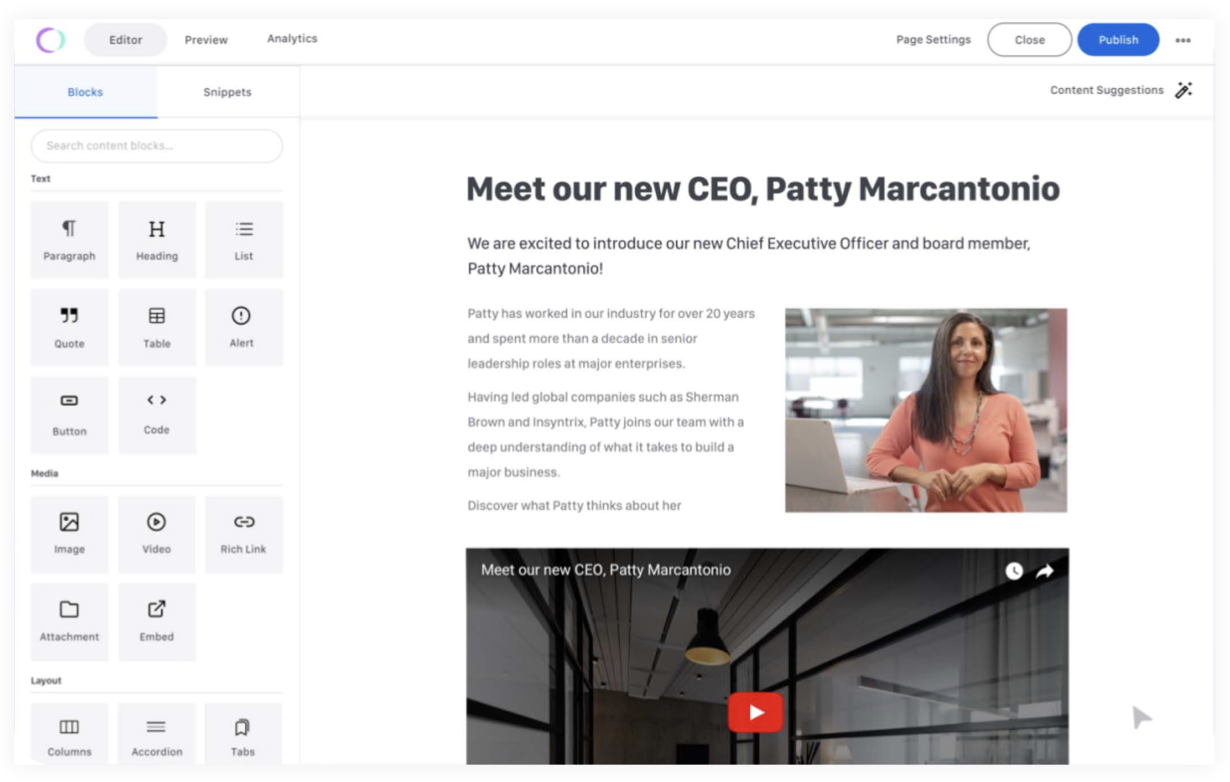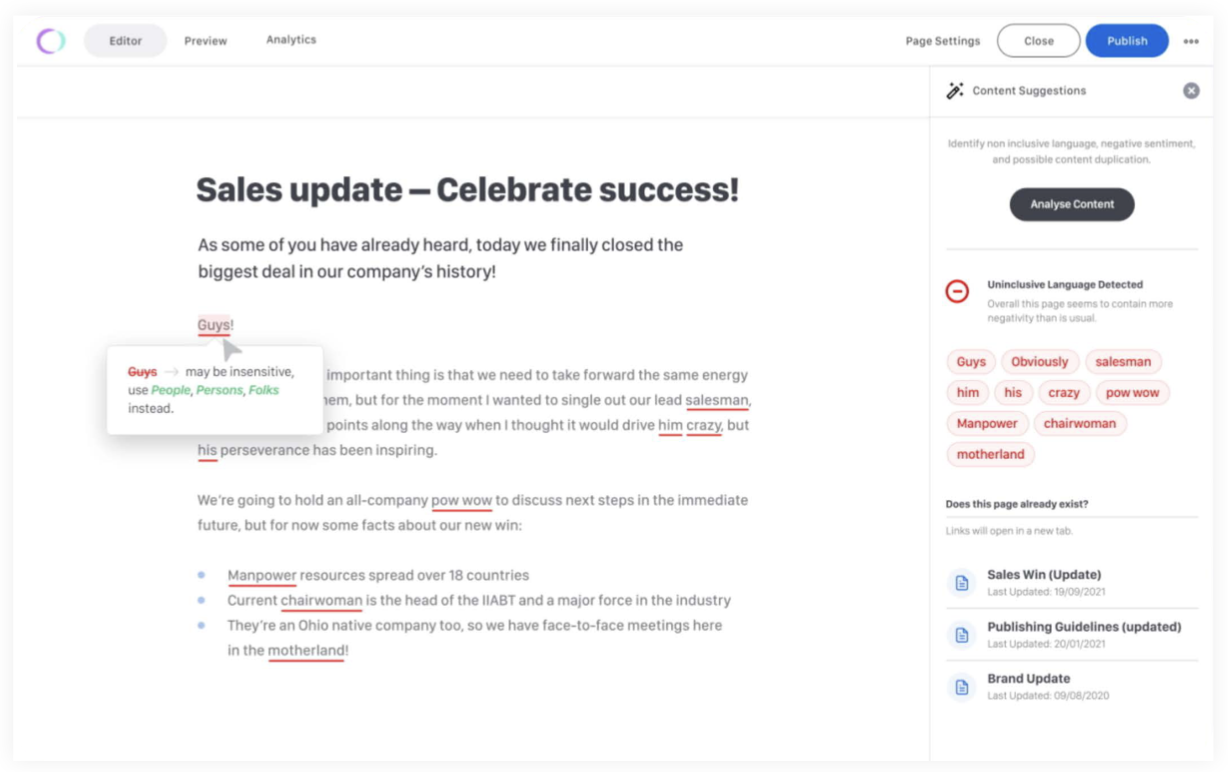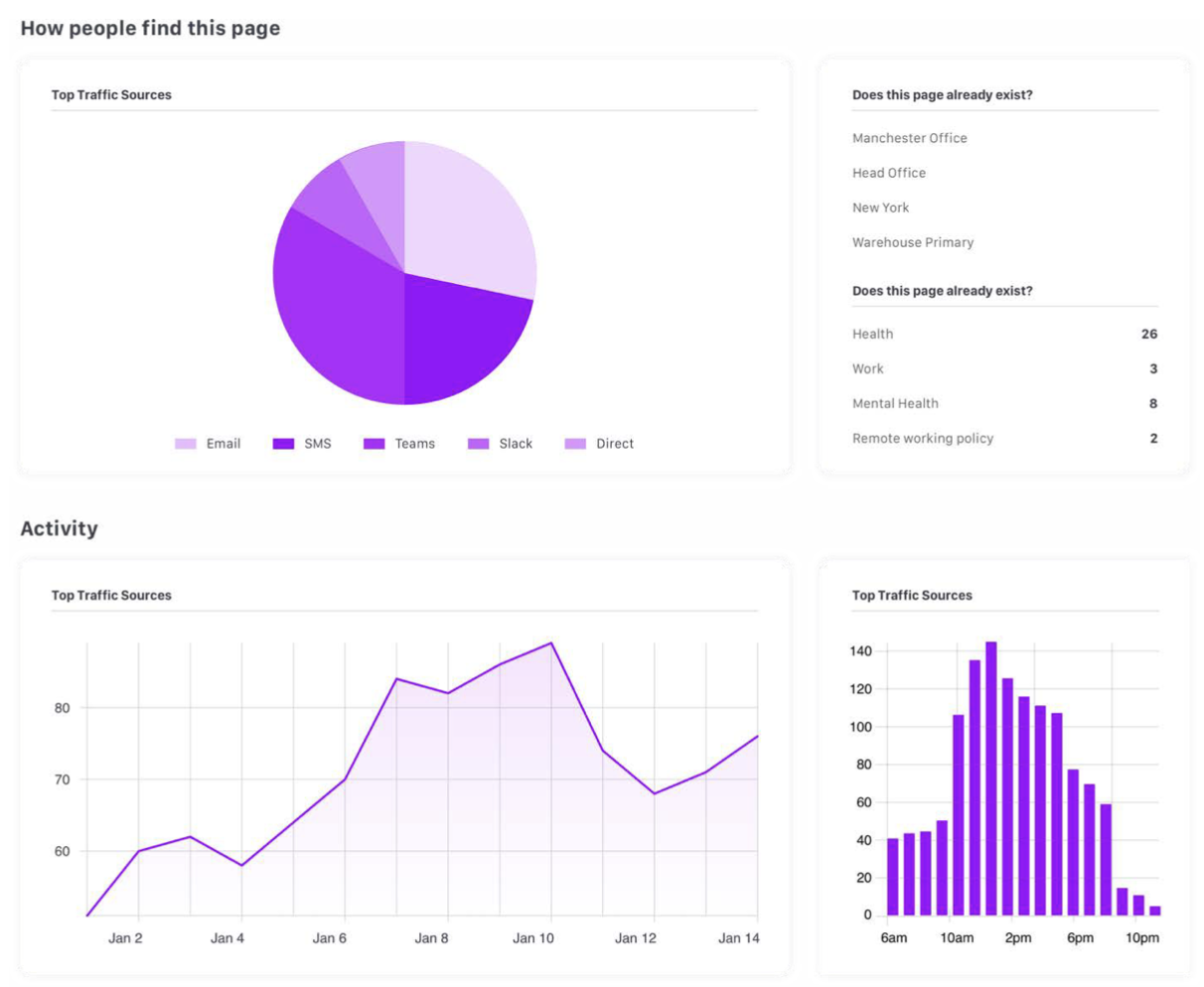In this blog, we explore how to create and execute a successful multichannel communication strategy that reaches every employee and receives healthy engagement.
What is a multichannel communication strategy and why does any organization need one?
As communications within enterprises diversify across multiple platforms (email, SMS, employee mobile app, Teams, Slack, shadow-IT WhatsApp threads, and more), communicators need to be able to easily deploy messages across a range of digital touchpoints. Having the power to distribute communications to different segments of the workforce across multiple channels means comms can be tailored and timed to reach the right people at the right moments.
But how should internal communicators approach the creation of a multichannel communication strategy? Before we dive in, it’s worth keeping in mind that different scenarios may require different approaches, so whether you’re communicating good news, bad news, or general day-to-day comms, you may want to adapt the approach that we have outlined below. This is where our comprehensive multichannel communications guide can help.
Questions to ask when building a multichannel communication strategy

Creating a multichannel communication strategy that fits your organization’s needs can be made so much easier by asking the right questions at the start of the process. The output from these questions will provide you with the essential information you need to shape your strategy, but more than this, it will help you to identify the tools and features you need to deliver purposeful comms across multiple channels easily. From there, you will be able to audit your existing internal communications platform to understand whether it is really fit for purpose against today’s internal comms challenges.
1. Who do you need to communicate with?
Which segments of the workforce do you need to reach? Will one message be suitable for each of the different audiences in your organization? If the answer is yes, then great – less work for you! However, you should carefully consider whether that approach is suitable or if you should tailor the messaging differently for different audiences. You might want to share some additional information with department heads and managers while also holding that information back from other employees, for example.
Multichannel communications: How to plan and execute a strategy
2. How are you communicating with your audience(s)?
Once you understand whether you are communicating with your organization as a whole or with specific segments of the workforce, you need to decide how you will communicate with each audience. Do you have data that reveals how people in your organization prefer to receive communications, or which channels groups or individuals are more receptive to? If your desk workers engage more with communications received through Teams or Slack rather than traditional email, but your frontline workers are better reached through a mix of SMS and internal employee communication app notifications, then you can map out exactly which channels you want to target different groups or individuals through.
3. Are you reaching employees at the right time?
If you’re sending out comms across to all employees across different channels at the same time, they may not be reaching people at the best time of day (or night), and this can diminish their effectiveness. This is particularly important in organizations that have people working in different time zones, or shift workers working different patterns. Being able to understand – or at least guestimate – the optimal time for those different groups of employees will help to ensure important comms aren’t getting glanced over or ignored entirely. For example, a shift worker receiving an internal communication right at the end of a long night shift probably won’t place a high priority on reading that message, and even if they do, they may not really digest the information.
4. How are you making your multichannel communications engaging?
You’ve worked out which channels you’re targeting specific employee groups through, and you know exactly when to deploy messaging to each group, but do your comms actually command attention? Are you utilizing easy-to-use design resources such as eye-catching imagery or embedded videos? Or are you just sending a chunk of text and hoping for the best?
It’s also essential to think about communications from an inclusivity standpoint, too. This is a big one as inclusivity isn’t just reflected in the way we behave towards our colleagues but also in how the organization communicates with people. Any tools you have at your disposal to help shape clear, decisive, and inclusive messaging can go a long way in making your comms hit the mark and resonate with your employees.
Multichannel communications: How to plan and execute a strategy
Essential tools and features for a multichannel communication strategy

Once you have answered the questions above, it will be clear whether your existing communications software is fit for purpose when it to comes to supporting your multichannel communication strategy. Having the right solution in place – such as modern intranet software focused on internal communications – ensures your multichannel communication strategy is easy to set up and manage without increasing reliance on other departments. Exciting communications are the goal, but if they get caught in a bottleneck of design and IT, they’re no longer practical.
When stories need to be shared quickly, communicators need to act fast. Not only do they need access to a platform that enables the rapid creation and execution of multichannel communications from one central place, they also need a solution that helps them to orchestrate the distribution of the content and provides analytics to measure success.
Thanks to developments in the modern intranet as an internal communications platform though, it is now also possible to use one as a centralized hub from which your multichannel storytelling can be curated, published, distributed, and analyzed.
Here are just a few of the new tools helping communicators to make effective stories:
Intuitive editor

A modern content editor with drag and drop controls allows you to remove reliance on your creative team and assemble engaging and compelling intranet pages quickly and easily, with little technical ability.
From headings to tables, quotes, buttons, images, video, rich links, tabs, and attachments, any user with the required publishing permissions can create and format professional and digestible content that will keep audiences reading.
Multichannel communications: How to plan and execute a strategy
Inclusivity and sentiment suggestions

Writing in a way that is inclusive and avoids unintentional negativity can be tricky. An AI-based writing assistant can autonomously detect non-inclusive language or negative sentiment and suggest alternative words or phrasing. This can be instrumental in helping to ensure communicators – or anybody creating content who may not be a skilled writer – can create positive, inclusive content that resonates with every reader.
Even more than this, AI-generated content suggestions can empower non-specialist content creators across an organization. This helps to unlock the power of subject matter experts and ensure that everyone with the required permissions can upload relevant material that all employees may benefit from.
Calculated reach
Gaining visibility of your ‘calculated reach’ across each channel will help you understand how many people you will reach through each messaging strand. This helps to understand the potential effectiveness of your campaign before you deploy your messaging. Coupled with after-campaign analytics, you have a powerful set of benchmarking tools that shows exactly what works best for your organization.
AI-powered engagement
Engagement technologies can now ensure that you distribute and schedule communications through the channels that your employees favor. This means that whether an individual employee is more receptive to communications received by email, app notification, SMS, or digital workplace platforms like Teams and Slack, this AI-powered functionality will help you deploy messaging to them through the most effective channel.
The same engagement technologies are now capable of providing every intranet admin with the option to let the platform decide the most effective time to distribute comms to each recipient. This factors in historical data around past engagement to create an AI-enabled strategy for maximum effectiveness.
Analytics

Granular analytics are essential to understanding the effectiveness of any multichannel communication strategy. A single analytics dashboard for each campaign should provide a detailed but easy-to-digest breakdown of essential metrics, including engagement across each channel, page views over time for a core piece of content, and an audience breakdown (including department, location, and company for organizations with multiple brands).
Multichannel communication strategies: the future of internal comms
A multichannel approach is vital for keeping your comms on track and on message, and reaching every one of your people with messaging that keeps them informed and connected. The ability to quickly and effortlessly create and deploy engaging, tailored, and digestible comms, and deploy them across all the vital touchpoints will ensure you’re instilling the clarity, motivation, and unity your people need and expect, whatever your organization comes up against.






